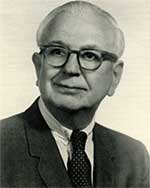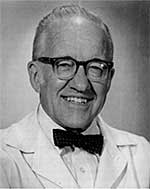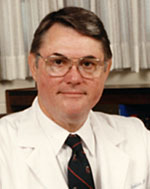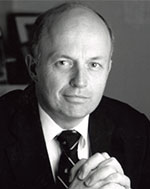History of the Department

 The UNC School of Medicine opened in 1879, and existed in several forms until it converted to a two year school following the Flexner Report in 1909. In 1952, it was recreated as a four year school with the construction of the North Carolina Memorial Hospital.
The UNC School of Medicine opened in 1879, and existed in several forms until it converted to a two year school following the Flexner Report in 1909. In 1952, it was recreated as a four year school with the construction of the North Carolina Memorial Hospital.

The UNC Department of Surgery was created in 1952 along with the new Memorial Hospital. Nathan A. Womack, MD was recruited from The University of Iowa to become the first Chairman. Dr. Womack set the foundation for a solid surgical program at UNC, that would quickly grow into one of the most respected training ground for surgeons in the United States. He hired the first faculty for the Department, including Dr. Dick Peters, Dr. Warner Wells, Dr. Paul Bunce, and the man who would go on to succeed him, Dr. Colin G. Thomas, Jr. He would later go on to hire such noted surgeons as Dr. George Johnson and Dr. Benson Wilcox.
During his time as Chair, Dr. Womack established a tumor clinic, a hand rehabilitation center, and the division of plastic surgery. He stepped down in 1966 after serving for 14 years.

Dr. Thomas lived by the motto with which he closed all his correspondence: “carpe diem.”

Dr. George F. Sheldon became the third Chair of Surgery at UNC in 1984. Dr. Sheldon came from the University of California at San Francisco, where he was in charge of the trauma department. He had an international reputation as a surgeon and educator, having been President of every major surgical association in the United States. While at the helm at UNC, Dr. Sheldon spearheaded a revolution in the expansion of facilities at the School of Medicine and UNC hospitals. He started the Critical Care Service, opened the UNC Hernia Center, and brought in specialties like Surgical Oncology and lung, liver, and pancreas transplantation. Pediatric surgery enjoyed a tenfold growth under his leadership. He was instrumental in the addition of helicopter service to the hospital, and creation of the Ambulatory Care Center.
Dr. Sheldon expanded the Department’s services and its reputation, locally, regionally, nationally, and internationally. He stepped down from the Chairmanship in 2001, but continued to provide UNC Surgery with the benefit of his decades of knowledge and experience for another twelve years.

In the 60-plus years of Surgery at UNC, there has been a rapid growth of the department and the institution in period of dramatic change in health care. Presently, UNC provides excellent, innovative patient care and training of next generation of surgeons. Everyone has helped develop an environment of collegiality and professionalism that defines the culture of UNC Surgery. It is this culture of excellence and commitment that binds all generations of the department and the entire institution together.
